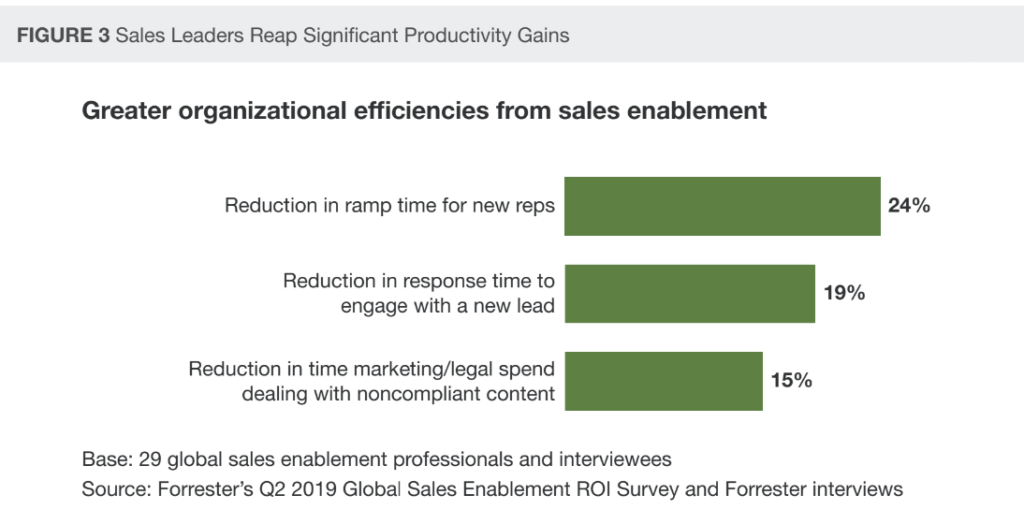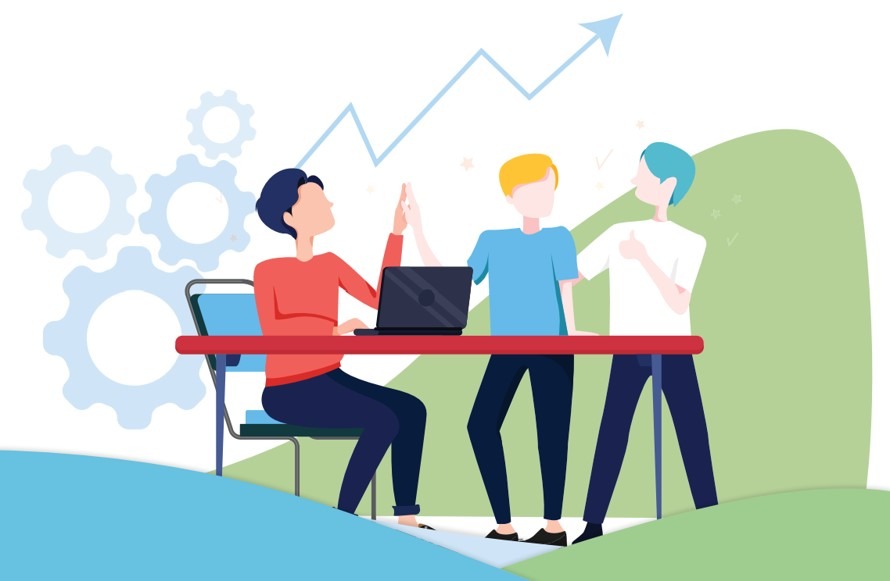Research company Aberdeen reports that "CRM expanders," that is, companies who add sales enablement to their CRM, have: 32% higher team sales quota attainment, 24% better individual quota achievement, 11% more quotes resulting in orders, and a 23% higher lead conversion rate. Sales enablement significantly influences quota fulfillment, sales revenue, and conversion rates. It has cemented itself as a sales driver that is no longer an option but a crucial part of survival in today's highly competitive economies. This post will cover the elements of a great sales enablement process.
What Is Sales Enablement?
It helps to understand what we mean when we say sales enablement. Because it is still evolving and maturing in function and scope, it isn't easy to get a single agreed-upon definition of sales enablement. If you ask ten people, "what is sales enablement?" you will likely get ten different answers.
We’ll define it as follows: sales enablement is a systematic approach to increasing sales productivity by equipping sales representatives with content, strategies, training, resources, and analytics to have more successful sales operations.
It all comes down to getting the right tools to your sales reps so that they can deliver the right action at the right time, resulting in superior sales performance.
For more context, here's everything you need to know about sales enablement.
Elements of a Great Sales Enablement Process
It’s Customer-Centric.
The first and most essential element of a great sales enablement process is to have a customer-centered system. Everything that your sales and marketing teams do for successful sales should revolve around your customers. The sales team and marketing team must read from the same script. Alignment between the two will enable them to identify the right customers, create successful campaigns, and improve the sales cycle. Next, align your sales process with the buyer's journey. Doing so allows you to deliver the right messaging at the right time.
It Supports the Sales Team with Technology and Tools.
If you have a well-defined sales process, it is only a matter of finding the right sales enablement tools and technology to supplement it and help accomplish your goal. Many organizations and individuals do the opposite by constantly chasing the latest gadgets and tech, after which they build their sales process around them. The latest tech and tools are critical support elements for the sales enablement process.
Some argue it's a "chicken and the egg, which came first?" situation. However, no matter how much trendy tech you own, your sales won't grow significantly without a streamlined process. The tools should work together in harmony and create a frictionless tech stack, which will increase the productivity and efficiency of your team.
It has Repeatable & Scalable Cadences
Sales cadences enable all your sellers to be on the same wavelength. A cadence is essentially the prescripted series of tasks that you’ve determined as a method for reaching prospects or customers. It tells your entire sales team what they need to do on any given day and can help them prepare for a series of conversations by providing information that will help them during these conversations. You can easily on-ramp new sales reps and replicate what works so the team can continuously improve.
Many companies either don't have cadences or use them inconsistently across the organization. Your reps must have repeatable and scalable cadences to follow. Furthermore, they should be updated frequently, using in-depth analysis of how different cadences are performing and how they could be adjusted. Without cadences, your teams will be performing tasks like the wild west, and it's much harder to manage and analyze chaos and disorder.
The chart below, from Forrester, illustrates how sales enablement truly helps organizations, especially with onboarding, with a 24% reduction in ramp time. Cadences can play a big role in this efficiency improvement as they're processes that can be easily taught to and followed by new sales reps, instead of using a "trial by fire" approach.

It Contains Superior Data and Insights.
Another critical element of a successful sales enablement process is data. Having data gives you an edge over your competitors. You can easily track your most important metrics with the right sales enablement platform. These data and analytics provide valuable insights for coaching and improvement.
Better data comes from sellers using consistent processes. Many organizations operate in a “wild west” manner where each seller uses their own process. When this is the case, it is much harder to measure, because you can’t understand the methods behind success or failure at such a granular level. When standardized processes are in play, you can analyze the success or failure of each process, or cadence, then dig into the granular details of how a better performing rep talks on the phone vs a lower performing rep.
For example, if you notice that some of your reps perform exceptionally while others lag, it is not enough to tell the bottom seller to try harder. It is better if you can share with them the best practices used by your top sellers and explain to them where to tweak their behaviors to raise their efficiency. You can have the data, but this means nothing—what you do with the insights is what matters.
The Workflow is Streamlined.
The ultimate goal of sales enablement is to make the entire sales process seamless and effective. Getting traction, reducing confusion, and minimizing non-active selling time all result from a streamlined workflow.
With Salesvue, a Salesforce-native sales engagement platform, everything a sales rep needs is available while they remain inside their Salesforce instance. That’s about as streamlined as it gets. Salesvue tells sellers exactly who to contact and when, whether it’s an initial prospecting call, another email in a cadence, or a follow-up call from an appointment. It can also help automate manual tasks like creating a sales opportunity or updating a contact or account record based on simply designating the result of a phone call or appointment.
And since Salesforce integrates with thousands of other tools, Salesvue becomes a simple addition to the tech stack. Having everything in one place saves a lot of time that would otherwise be spent going back and forth from tool to tool, and there are no syncing or data discrepancy issues.
Conclusion
Sales enablement has proven to be a key part of successful sales in today's highly competitive business landscape. It is important to note that it takes way more than qualified reps to achieve business goals. Even the most talented sales reps need ongoing enablement, training, and mentorship to remain effective.
Your sales outputs can significantly improve if you include these elements in your sales enablement process. Using Salesvue will help your team experience what feels like being ahead of the rest of the pack. Request a demo today and get started!
Category
Tags
Subscribe to Funnel Vision
Get the latest and greatest right in your inbox






